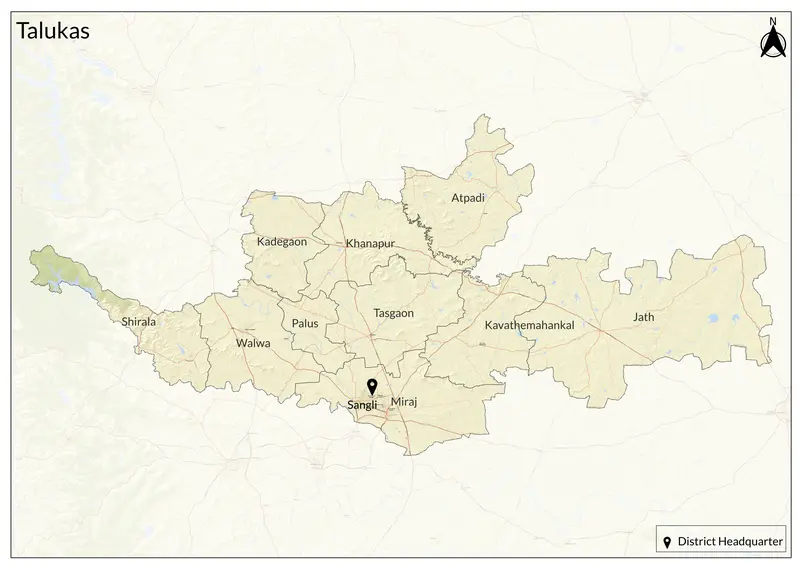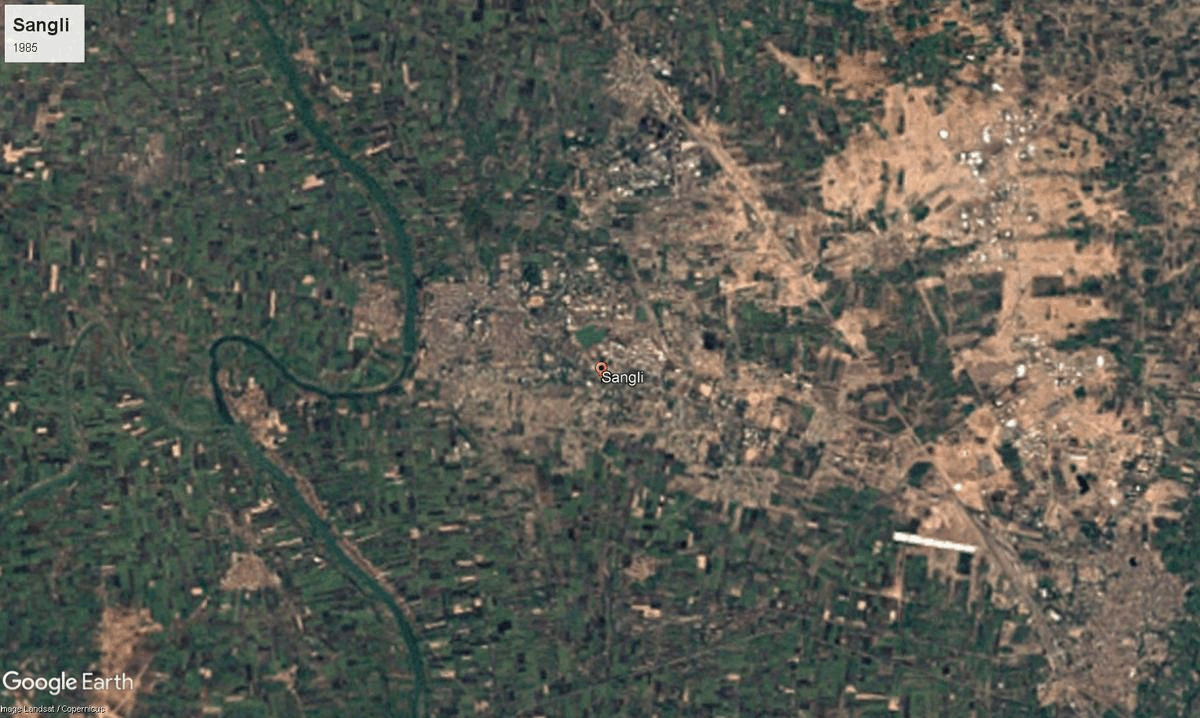Sangli

8,572 sq. km
~30.26 lakh (2019)
964 (2011)
~ ₹45,657 crore (2019)
~ ₹1.51 lakh (2019)
Sangli district, in southwestern Maharashtra, has ancient roots linked to the Chalukya kingdom (its capital was Kundal (once called Kaundinyapura), which is now a town there), and was later part of the southern Maratha jagirs, notably Miraj and Sangli itself. The name "Sangli" is believed to come from “Saha Galli” (six lanes in Marathi) referencing the original street plan, or possibly from “Sangalki” (Kannada) or the nearby “Sangam” (confluence) of Krishna and Warna rivers. The region saw rule by dynasties like the Mauryas, Satavahanas, Rashtrakutas, Yadavas, and Bahamanis, becoming an independent entity under the Patwardhans during the Peshwa era. In 1801, the principality of Sangli split from Miraj, later becoming a British protectorate, and formally joining the Indian Union in 1948; the present district was created in 1949 (as South Satara) and renamed Sangli in 1960. Today, Sangli district consists of Miraj, Tasgaon, Kadegaon, Palus, Khanapur (Vita), Atpadi, Jat, Kavthe Mahankal, Walwa, and Shirala talukas.
Culturally, Sangli and its surrounds are rich in folk traditions, classical theatre, and Marathi literature, famously called "Natya Pandhari" (Capital of Marathi Dramas). Miraj, its twin city, is globally recognized for the manufacturing of classical musical instruments. The district is a vibrant center for festivals, hosting Ganesh Chaturthi, Jatra fairs, and religious gatherings at temples like Audumbar, Sri Sri Radha Gopal Mandir, and several Jain pilgrimage sites. Sangli’s local food, especially Bhadang (spiced puffed rice) and Bharala Wangi (stuffed eggplant), are local culinary hallmarks. Sangli is also home to several culturally and naturally significant places. Dandoba Hill Forest Preserve and Sagareshwar Wildlife Sanctuary support diverse plant and animal life. Meerasaheb Dargah in Miraj holds religious importance. Kundal houses Zari Parshwanath and Samav Sharan, believed to be places where Bhagwan Mahaveer delivered knowledge. Dattatraya Mandir in Audumbar is also well known.
Geographically, Sangli spans the basins of the Krishna, Warana, and Panchganga rivers, making it one of Maharashtra’s most fertile and agriculturally productive districts. Its diverse environment includes flood-prone lowlands near the Krishna and drought-prone western talukas; major water projects like Tembhu-Mhaisal Yojana and Takari have improved irrigation. The district is also home to the Sagareshwar Wildlife Sanctuary, an artificially cultivated forest with many introduced species.
Sangli is celebrated as the “Sugar Bowl of India” with over a range of sugar factories (including Vasantdada Patil Shetkari Sahakari Sugar Factory, the largest in Asia, arguably). It leads in turmeric (Sangli turmeric has been awarded a Geographical Indication (GI) tag, affirming its reputation as turmeric hub) and raisin production, supported by vibrant markets for grapes, jaggery, cotton, and other crops. Industrial townships like Kirloskarwadi, established by Laxmanrao Kirloskar, gave Sangli one of India’s earliest rural industrial bases. Education, healthcare (with a large cluster of hospitals in Sangli-Miraj-Kupwad), and a growing IT presence round out the district’s economic profile.
